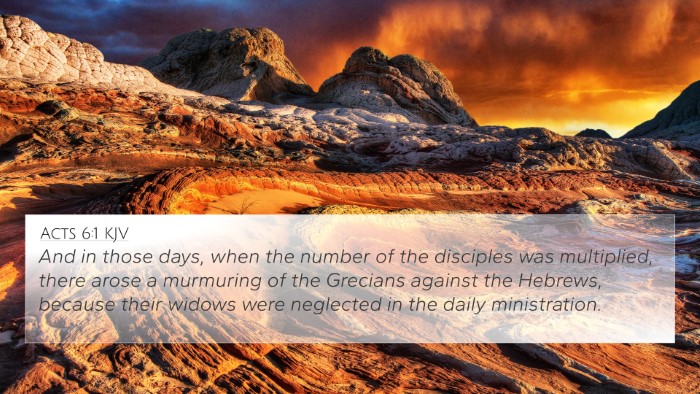Understanding Acts 2:44
Acts 2:44 states, "And all that believed were together, and had all things common." This verse captures a crucial moment in the early church, highlighting the unity and shared life of the believers.
Summary of Insights from Public Domain Commentaries
The verse exemplifies the profound sense of community experienced by the early Christians following Pentecost. Here’s a synthesis of insights from notable commentaries:
- Matthew Henry: Matthew Henry emphasizes that the believers' unity was not merely social but spiritual. They were bound by their faith, which led them to share their possessions. This communal living was an outward sign of their inner spiritual transformation and commitment to one another.
- Albert Barnes: Barnes explains that this verse illustrates the charitable nature of the newly formed church. The expression of having “all things common” does not imply a forced communism but rather voluntary sharing motivated by Christian love. He notes that this setup fostered a strong sense of fellowship and accountability among the believers.
- Adam Clarke: Clarke points out that the believers' shared possessions serve as a crucial example of Christian charity. He remarks that this communal lifestyle was a necessary response to the challenges faced by early Christians; hence, their solidarity can be viewed as both a practical measure and a spiritual principle.
Key Themes in Acts 2:44
This verse introduces several prominent themes in the Bible that reflect the nature of Christian community, generosity, and unity:
- Unity in the Body of Christ: Acts 2:44 illustrates the collective experience of believers as they occupy a shared space of faith, showcasing how mutual support is vital for spiritual growth.
- Acts of Generosity: The believers’ willingness to share demonstrated the principles of generosity and selflessness that are central to Jesus’ teachings, subsequently echoing through other passages in the New Testament.
- The Role of the Holy Spirit: The context of Acts 2 points to the empowering effect of the Holy Spirit, enabling believers to overcome individualism in favor of community.
Cross-References to Acts 2:44
To deepen understanding of Acts 2:44, consider these cross-referenced verses which connect thematically:
- 1 John 3:17-18: Demonstrates the necessity of action in love and sharing with those in need.
- 2 Corinthians 8:13-15: Encourages fairness in sharing, where no one is burdened and no one is in need.
- Romans 12:13: Urges believers to share with those in need and practice hospitality.
- Galatians 6:2: Instructs believers to bear one another's burdens, fulfilling the law of Christ.
- Matthew 18:20: Indicates the presence of Christ among gathered believers, highlighting the importance of unity.
- Hebrews 10:24-25: Calls for mutual encouragement among believers and assembling together to strengthen the community.
- Acts 4:32: Goes further into the shared practice of having all things in common, emphasizing the grace upon the apostles.
Practical Applications
The principles found in Acts 2:44 can be applied to contemporary Christian life by:
- Encouraging local church communities to foster a spirit of sharing and generosity.
- Creating small groups focused on mutual support and accountability in faith journeys.
- Implementing community initiatives that address the needs of those facing hardships.
Thematic Connections Across the Bible
Acts 2:44 stands at the intersection of many themes prevalent throughout the scripture:
- Generosity and Giving: Numerous biblical texts call for generosity, such as Proverbs 11:24-25 and Luke 6:38, emphasizing that giving is blessed.
- Community and Fellowship: Passages like Philippians 2:1-2 and Colossians 3:14 echo the importance of unity and love among believers.
- Spiritual Transformation: The transformation seen through the sharing of goods reflects the heart change highlighted in 2 Corinthians 5:17.
Conclusion
Acts 2:44 provides a foundation for understanding early Christian community dynamics, underscoring principles of unity, sharing, and collective responsibility. This verse, when connected to others, illustrates a broad narrative of how the early church functioned under the guidance of the Holy Spirit.
To delve deeper into the concepts surrounding this verse, consider employing tools for Bible cross-referencing and engaging with these themes in various texts across the Old and New Testament.









